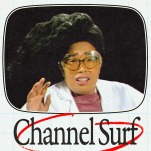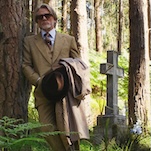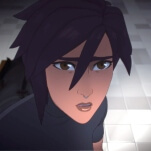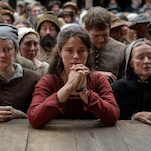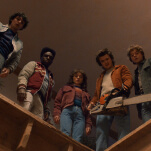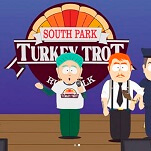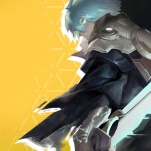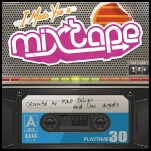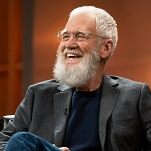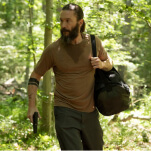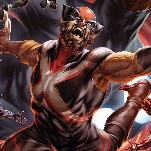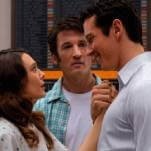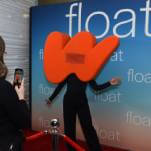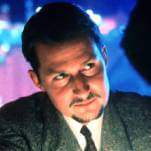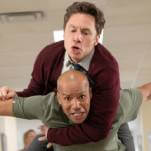Luke Bracey stars as rookie FBI agent Johnny Utah, now a former motocross star with a hunch that professional thrill-seekers are behind a string of heists. Given FBI veteran Pappas (Ray Winstone, barely trying) as his handler, Utah heads off to France and soon crosses paths with Bodhi (Édgar Ramírez) and his crew of extreme sports pros, who spend their days flying around in wingsuits and having really incriminating conversations within earshot of people they’ve just met. Casting Ramírez, best known for his magnetic turn in Olivier Assayas’ miniseries Carlos, in the Patrick Swayze role might seem like a minor coup, but whereas the original Point Break was a wild mishmash of acting styles—from Keanu Reeves’ blankness to Swayze’s affability to Gary Busey’s bug-eyed freaking—everyone in the new version looks like they’re about to frown themselves to sleep.
Bodhi and his gang are on an eight-step path to enlightenment cooked up by a Japanese environmentalist guru, and seeing as their quest is being bankrolled by a super-rich dilettante, they don’t actually need money. Instead, they are modern-day Merry Men in Patagonia jackets, stealing diamonds and freight pallets of cash only to send them raining down from the sky. (In short, this is Point Break as reimagined by someone who didn’t “get” Point Break.) Core, whose credits include shooting the first The Fast And The Furious, is proficient with eye-catching stunt shots and rugged vistas, but he stages every conversation the same way, with characters leaned forward as though called in for a plot briefing. For a movie about people chasing highs, his Point Break is creepily lifeless. There are narrow escapes and death-defying leaps, but who could find any of it thrilling?
With its chugging guitars and faux-bleach-bypass color palette, Point Break looks like a funeral wake set in a Surge commercial. Bigelow’s movie made inspired and colorful use of New Age and all-American iconography (college football, the FBI, president masks), but here, there’s nothing but empty signifying, none of it emptier than the script’s callbacks to the original film, meaningless without context. It’s ironic that this story about a search for deeper meaning—which the movie takes at face value—should be so completely cosmetic, from the tattoos that cover every major character’s skin to the empty mentions of environmental issues. It goes through the motions of a thriller (a bank shootout, a flight through the Alps, a waterfall showdown, etc.), but like the proverbial seeker who doesn’t realize the true path is within, comes out embarrassingly empty.







